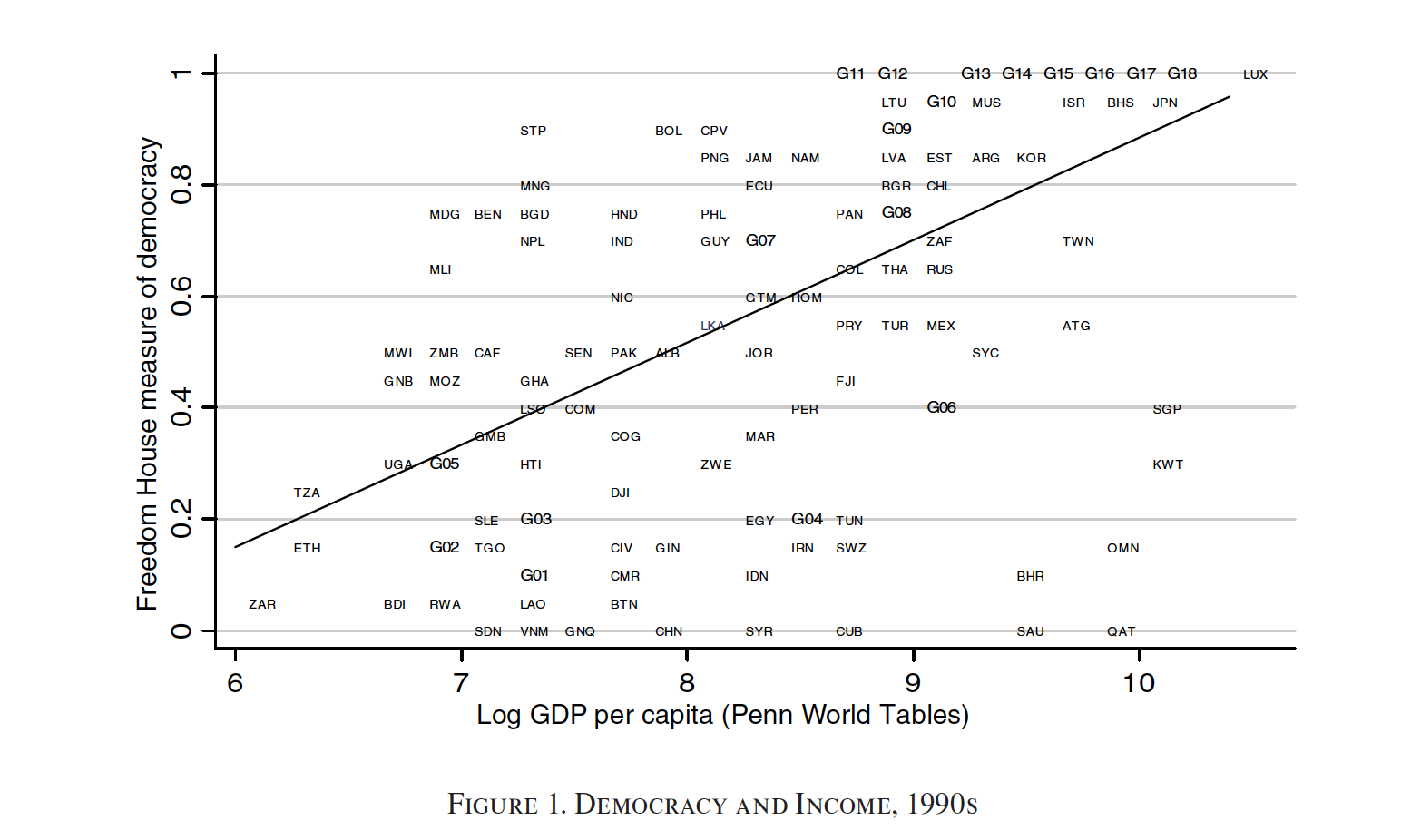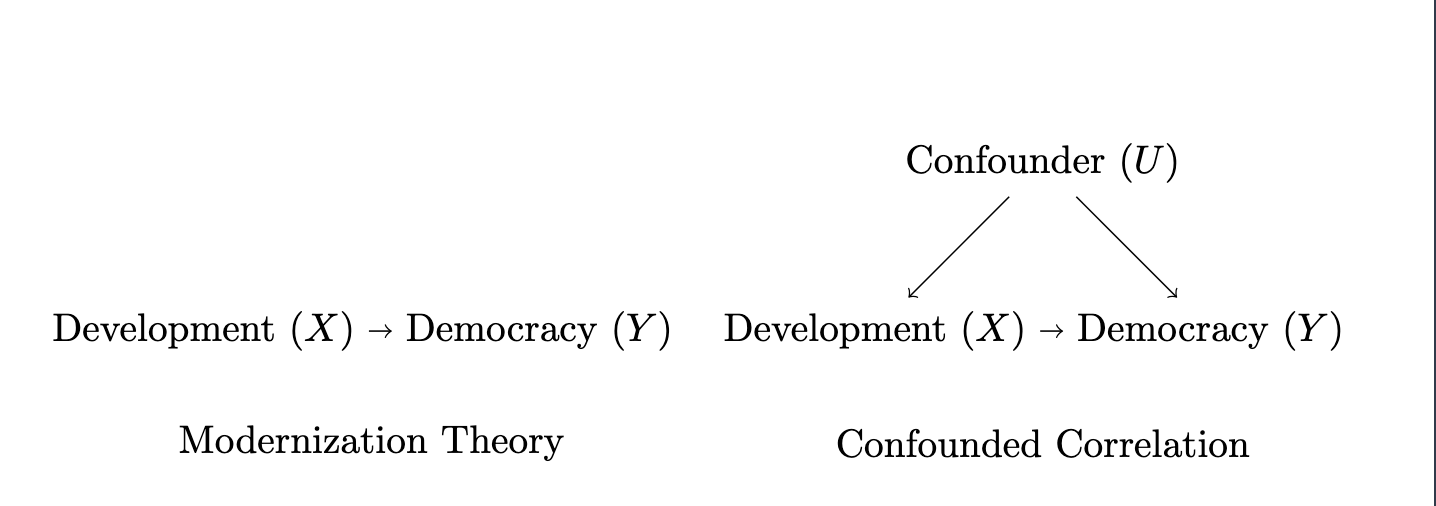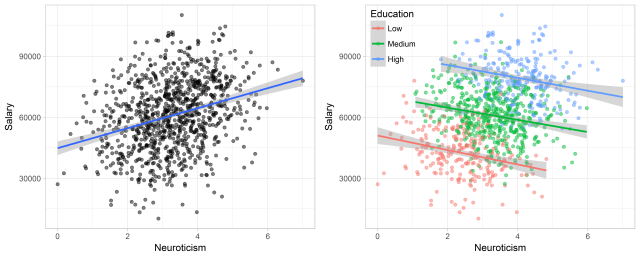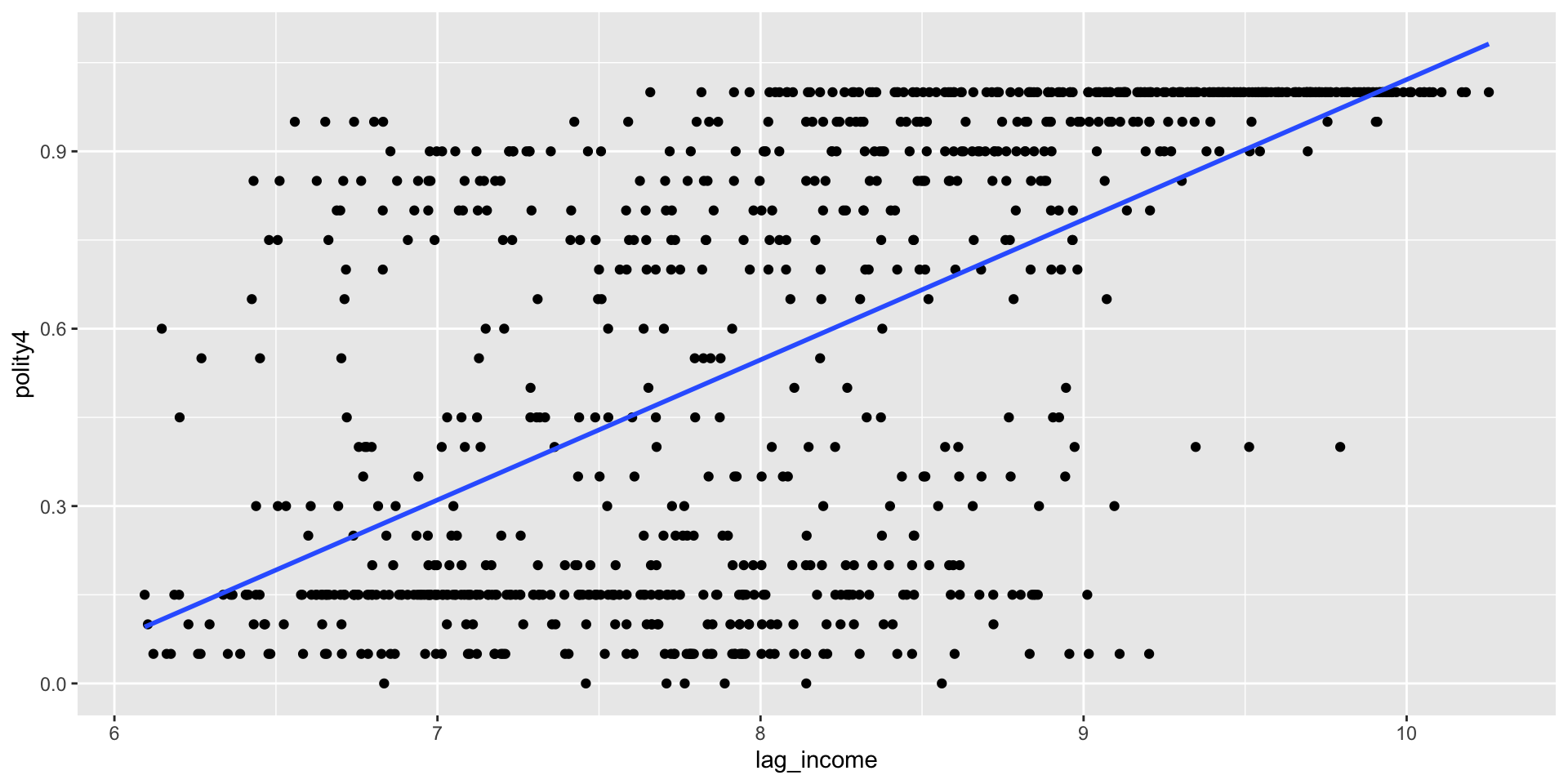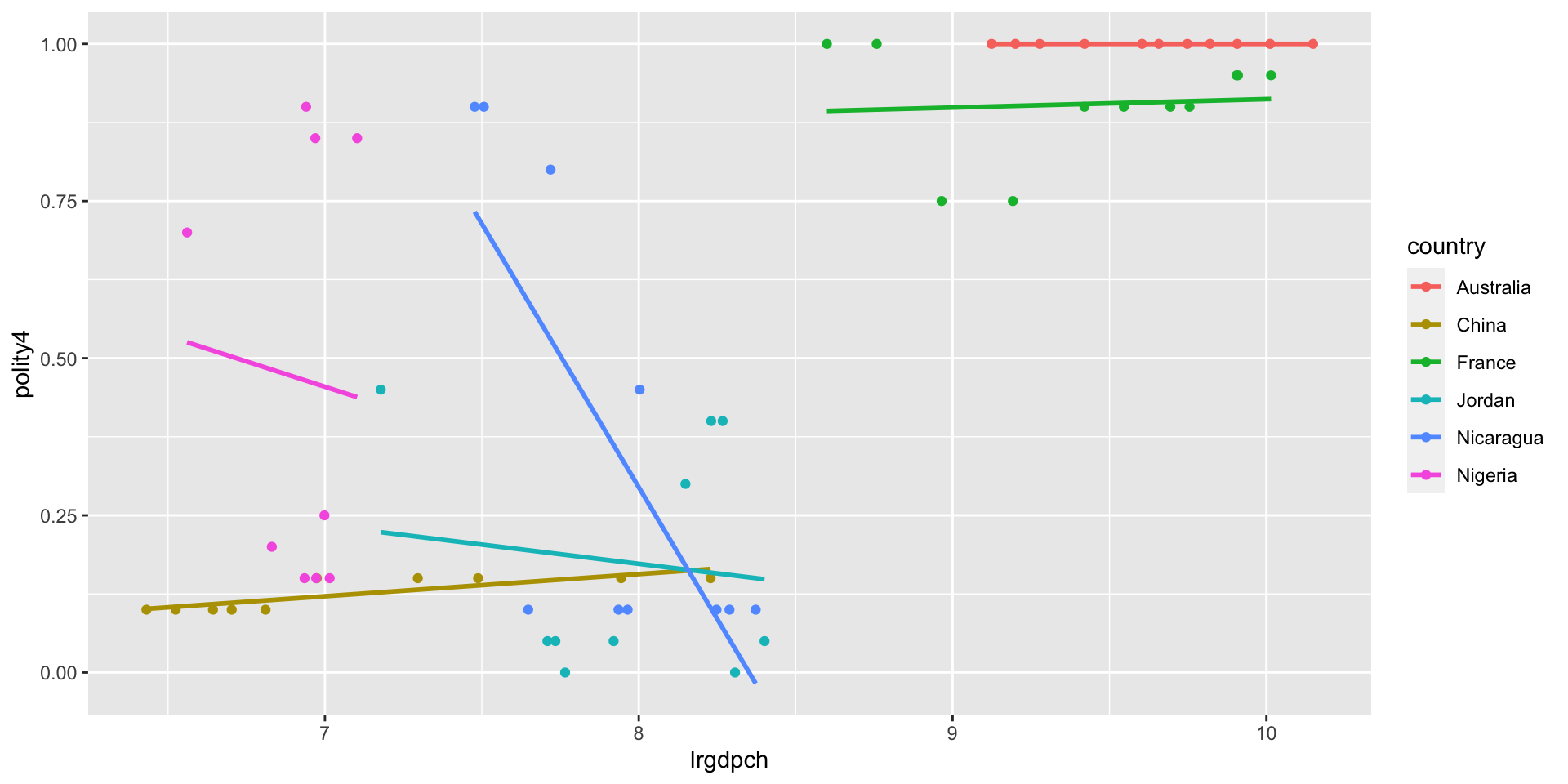pacman::p_load(readxl, tidyverse, here, estimatr)
d <- read_xls(here("./slides/code/Income-and-Democracy-Data-AER-adjustment.xls"),
sheet = 2) %>%
filter(is.na(lrgdpch) == F, is.na(polity4) == F) %>%
arrange(country, year) %>%
group_by(country) %>%
mutate(lag_dem = lag(polity4), lag_income = lag(lrgdpch)) %>%
ungroup()
# Polity2 Index
summary(d$polity4) Min. 1st Qu. Median Mean 3rd Qu. Max.
0.000 0.150 0.700 0.573 0.950 1.000 # Log real GDP per capita (PWT)
summary(d$lrgdpch) Min. 1st Qu. Median Mean 3rd Qu. Max.
6.094 7.297 8.149 8.167 8.960 10.413 